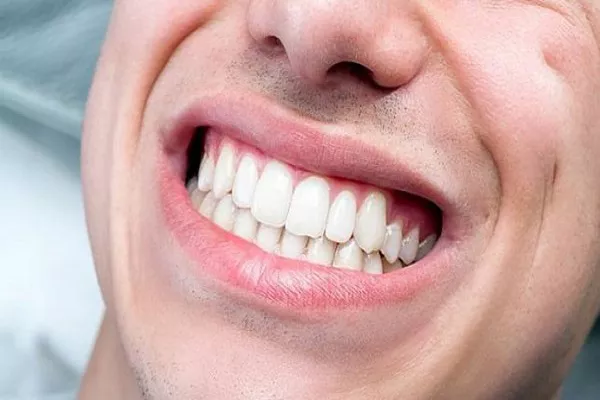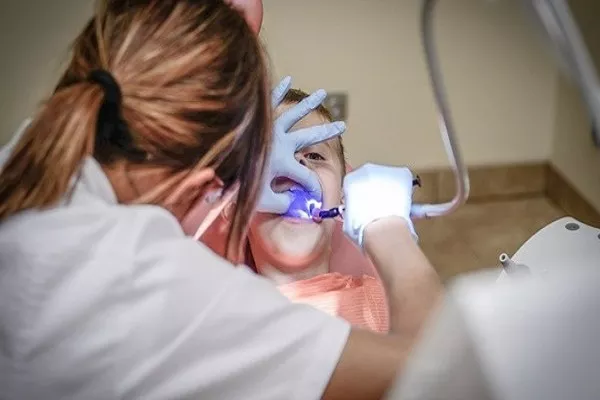Gingivitis is a common dental condition characterized by inflammation of the gums, primarily caused by plaque buildup on teeth. While it’s a prevalent issue, early detection and proper treatment can prevent its progression into more severe forms of gum disease. This article aims to provide a comprehensive guide on recognizing the signs of early-stage gingivitis and implementing effective treatment strategies.
1. Recognizing the Signs of Early Gingivitis
The first step in treating gingivitis is identifying its early symptoms. Pay close attention to:
1.1. Gum Redness and Swelling:
Early gingivitis often manifests as redness and swelling along the gumline. Gums may appear more prominent and feel tender to the touch.
1.2. Bleeding Gums:
One of the most common signs of gingivitis is bleeding gums, especially during brushing or flossing. While occasional bleeding might be overlooked, consistent bleeding is a cause for concern.
1.3. Bad Breath (Halitosis):
Gingivitis is associated with the release of toxins from bacteria in plaque. This can result in persistent bad breath, even after thorough oral hygiene practices.
1.4. Receding Gums:
Gums may start to pull away from the teeth, creating pockets where bacteria can thrive. Receding gums are a clear indicator of gum disease progression.
2. Establishing a Rigorous Oral Hygiene Routine
Once early gingivitis is identified, a proactive oral hygiene routine becomes crucial. Follow these steps:
2.1. Brushing Technique:
Use a soft-bristled toothbrush and fluoride toothpaste. Brush in a circular motion, reaching all tooth surfaces and the gumline. Aim for at least two minutes, twice a day.
2.2. Flossing Daily:
Flossing is essential for removing plaque and debris between teeth and along the gumline. Make it a daily habit to prevent the buildup of harmful bacteria.
2.3. Mouthwash:
Rinse with an antimicrobial or fluoride mouthwash to further reduce bacteria and strengthen enamel. Choose a product recommended by your dentist.
2.4. Regular Dental Checkups:
Schedule routine dental checkups every six months. Professional cleanings can remove plaque and tartar that regular brushing and flossing might miss.
3. Adopting a Gum-Healthy Diet
Diet plays a significant role in oral health. Certain foods can promote gum health and reduce the risk of gingivitis:
3.1. Vitamin C-Rich Foods:
Incorporate fruits and vegetables high in vitamin C, such as oranges, strawberries, and bell peppers. Vitamin C supports gum health and collagen production.
3.2. Dairy Products:
Dairy products like yogurt and cheese contain calcium and phosphates that strengthen teeth and contribute to overall oral health.
3.3. Crunchy Fruits and Vegetables:
Chewing on crunchy fruits and vegetables like apples and carrots can help clean teeth and stimulate gum health.
3.4. Limit Sugar Intake:
Reduce the consumption of sugary foods and beverages, as they contribute to plaque formation. Opt for sugar-free alternatives when possible.
4. Over-the-Counter Dental Products
Several over-the-counter (OTC) dental products can aid in the treatment of early gingivitis:
4.1. Antibacterial Toothpaste:
Choose a toothpaste containing antibacterial agents like triclosan or fluoride to help fight bacteria and strengthen enamel.
4.2. Antiseptic Mouthwash:
An antiseptic mouthwash can reduce bacteria in the mouth, promoting healthier gums. Look for products with essential oils or chlorhexidine.
4.3. Interdental Brushes or Picks:
These small brushes or picks can reach areas between teeth that regular toothbrushes may miss, aiding in plaque removal.
5. Professional Dental Treatments
In addition to at-home care, professional dental treatments are essential for managing early-stage gingivitis:
5.1. Professional Cleaning:
Dental cleanings performed by a dental hygienist can remove plaque and tartar, preventing the progression of gingivitis.
5.2. Scaling and Root Planing:
For more advanced cases, scaling and root planing may be recommended. This deep cleaning procedure removes bacteria from below the gumline and smoothens the tooth roots.
5.3. Prescription Medications:
In some cases, dentists may prescribe antimicrobial mouthwashes or gels to control bacterial growth and inflammation.
5.4. Follow-Up Appointments:
Regular follow-up appointments are crucial to monitor the progress of treatment and make necessary adjustments to the care plan.
6. Lifestyle Modifications for Gum Health
Certain lifestyle factors can impact gum health. Consider these modifications:
6.1. Smoking Cessation:
Smoking is a significant risk factor for gum disease. Quitting smoking can improve overall oral health and prevent the worsening of gingivitis.
6.2. Stress Management:
Chronic stress can weaken the immune system, making it harder for the body to fight off infections, including gum disease. Practice stress-reducing techniques like meditation or yoga.
6.3. Stay Hydrated:
Drinking an adequate amount of water helps flush away bacteria and food particles, maintaining a healthier oral environment.
7. Monitoring and Maintenance
After implementing these strategies, it’s crucial to monitor your oral health and make necessary adjustments. Regularly assess:
7.1. Gum Appearance:
Check for any changes in gum color, size, or texture.
7.2. Bleeding:
If bleeding persists or worsens, consult your dentist for further evaluation.
7.3. Dental Checkups:
Continue scheduling regular dental checkups to ensure ongoing gum health and catch any issues early on.
Conclusion
Early detection and proactive management are key to treating gingivitis effectively. By adopting a thorough oral hygiene routine, making dietary adjustments, using appropriate dental products, seeking professional treatments, and making lifestyle modifications, you can promote gum health and prevent the progression of gingivitis. Remember, maintaining good oral health is a lifelong commitment that pays off in a bright, healthy smile and overall well-being. If you suspect gingivitis or have concerns about your oral health, consult with your dentist promptly for personalized guidance and care.
Related topics:
Unveiling the Impact: What Happens If You Kiss Someone with Gingivitis?





























